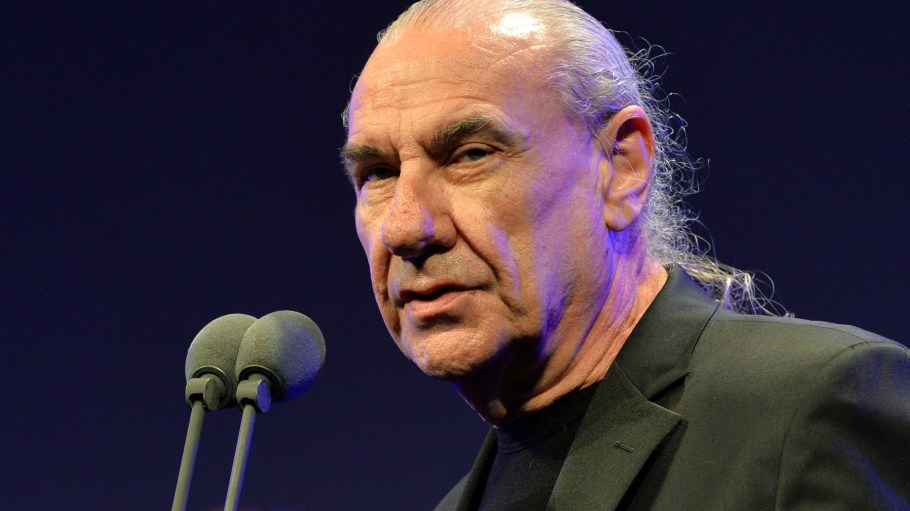BREAKING: Black Sabbath GUITARIST Tony Iommi C…read more.
In one of the most iconic riffs in rock history instantly recognizable, thunderously powerful, and deceptively simple. The opening guitar of Black Sabbath’s “Paranoid” doesn’t just kick off a song; it launched a genre into the mainstream. More than five decades later, fans still marvel at how something so basic could be so revolutionary.
For Tony Iommi, Black Sabbath’s legendary guitarist and chief riff architect, the creation of “Paranoid” was less of a master plan and more of a spontaneous accident.
“We were in the studio finishing up the album, and we realized we were one song short,” Iommi once recalled in an interview. “The label wanted something fast, something energetic. I just started playing this little riff really simple and within minutes, the whole thing came together.”
The “little riff” he’s referring to would go on to become one of the most famous in rock music. Played on his signature down-tuned guitar, the three-chord riff that drives “Paranoid” was not initially seen as anything special. In fact, the band didn’t even expect it to become the centerpiece of their 1970 album.
Originally titled “War Pigs”, the album was supposed to be a statement against war and violence. But when Iommi, bassist Geezer Butler, drummer Bill Ward, and frontman Ozzy Osbourne cooked up “Paranoid” in a matter of hours, the label saw hit potential and demanded it be the album’s title track.
“We didn’t even think much of it,” Iommi has said. “It was just a quick song. The riff came out of nowhere, and Ozzy wrote the lyrics really quickly. But sometimes the best things happen when you’re not overthinking.”
Indeed, the magic of “Paranoid” lies in its simplicity. Unlike the more complex, doom-laden tracks that filled the rest of the album, “Paranoid” was short, sharp, and catchy. It clocked in at under three minutes, featured no solos or tempo changes, and focused entirely on the repetitive yet hypnotic riff.
That riff built on a driving E power chord captured the anxiety of the times. Britain in the late 1960s and early ’70s was a place of economic instability, war protests, and political unrest. Young people were feeling alienated and unheard. “Paranoid” gave them a voice even if it was just through the frustrated, manic energy of a three-minute rock anthem.
“People connected with it,” Ozzy Osbourne explained years later. “They heard that riff and those lyrics, and it was like ‘Yeah, that’s how I feel.’ We didn’t know we were tapping into something bigger. We were just being ourselves.”
The raw honesty of the track became part of its legacy. While the riff may have sounded basic to musicians, it struck a primal chord with listeners. And over time, it influenced countless bands from Metallica to Nirvana to Rage Against the Machine all of whom cite Iommi’s riff writing as foundational to heavy metal and alternative rock.
Music historians often place “Paranoid” at the birth of heavy metal, crediting Iommi’s signature tone and riff-writing as a blueprint for the genre. And yet, the man behind it all remains modest.
“I’ve written more complex stuff,” Iommi admitted. “But there’s something about that riff it just works. It’s got that drive. It gets in your head and stays there.”
Even now, in 2025, with Iommi continuing to inspire guitarists across generations, the story of “Paranoid” reminds us that sometimes the greatest art isn’t the most intricate it’s the most honest.
That one “basic” riff, created in a hurry to fill time, ended up becoming the song that defined a band, a genre, and an era.
Sidebar: Did You Know?
- “Paranoid” reached No. 4 on the UK Singles Chart in 1970 the band’s highest-charting single.
- Tony Iommi lost the tips of two fingers in a factory accident before forming Black Sabbath. He crafted homemade plastic fingertip prosthetics to continue playing guitar shaping his unique sound.
- The Paranoid album was recorded in just a few days at Regent Sound Studios in London.
From Birmingham’s gritty streets to the global stage, Iommi’s “simple” riff became a monument in music history proof that even the most unassuming ideas can become legends.



